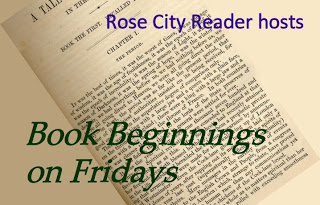In The Woods by Tana French is next up on our 100 Bestsellers List reading challenge. In The Woods is also the forty-first book we’ve read, which means we are 2/5 of the way through the list. Can you believe we’ve read 41 books? That also means that, between the two of us, Roberta and I have written 82 book reviews for this challenge alone, which is no small accomplishment. We should throw ourselves a virtual celebratory party!
This post does not contain spoilers.
In The Woods* by Tana French
For a summary of In The Woods, read Roberta’s Writer’s Review and her excellent description of the eight key components of a plot.
Debut Novels
Eight of the books we’ve read so far in this challenge were debut novels: The Mill River Recluse, The Weird Sisters, Hotel on the Corner of Bitter and Sweet, The Silent Wife, The White Tiger, The Weight of Silence, The Marriage Bargain, and now In The Woods. So 1/5 of the books read so far were debut novels. I find that fact interesting – it means that 1/5 of the authors figured out early on or intuitively already knew what makes a great novel.
For this Bestseller Code Challenge we are reading through the list of books in The Bestseller Code, Anatomy of The Blockbuster Novel by Jodie Archer & Matthew L. Jockers for several reasons, one of which is to see how our tastes in books compares with the computer model. In The Bestseller Code, the authors discuss a writer’s style and how that factors into making a bestselling book.
In short, style is important: it is the mechanism through which plot, theme, and character get delivered. Style is at once mechanical and organic; it springs from a combination of nature and nurture; from innate ability and practiced craft. And nowhere is the importance of style seen more vividly than in the work of those authors who are hitting the NYT list for the first time. Saying it is difficult to make it straight onto the NYT list with a first novel is a great understatement.
First Lines, or #BookBeginnings
One of the elements of novelistic style the authors of The Bestseller Code discuss in great detail is the first line of a novel:
We believe that the first line of a novel can tell you a lot about the writer’s command of style.
They give three examples of famous first lines and then explain:
One thing that is immediately clear about all three of these classic writers is that their first sentences create voice. Someone is talking to us, and that someone sounds authentic, in command of some sort of authority. There is no wavering, or cautiousness, or lack of surety. All novelists have the challenge of creating some sort of selfhood, and readers might note that they tend to keep reading when that selfhood, attractive or not, at least knows itself and leads its reader. The best writers – or those that will achieve the most readers – are able to establish this kind of presence from the opening sentence with tiny and seemingly effortless modulations in style.
This is one reason why Roberta begins the discussion of each of our challenge novels with a BookBeginnings post. The first line is an important style feature and bestselling authors know how to craft a first line that will hook their readers. For a debut novelist, this ability is even more important – they cannot rely upon their faithful following of readers to buy their books because they don’t have a faithful following yet!
Here’s the first line from Chapter 1 of In The Woods:
What I warn you to remember is that I am a detective.
We don’t yet know if our narrator is male or female, but we do know that we’re being cautioned about him/her being a detective. Why would he/she warn us about this fact?
This is the stuff a good stylist needs to recognize: that the first sentence is the hook and the hook is a mixture of voice and conflict achieved through the mechanics of diction and syntax. – The Bestseller Code
Are you hooked already? I was.
Page Turner
From the very first sentence, In The Woods was a page turner. I enjoyed the interplay of the two main detectives, Rob (“I am a detective”) and Cassie. I was intrigued by the inner conflict of Rob as he tried to solve one murder that took place in the same location where, twenty years before, his two best friends disappeared and he was left with no memory of what happened to them.
In The Woods is not just a mystery, it is a psychological mystery, and a very good one at that. I loved the little seeds and distractions that French left for the reader to pick up – I kept wondering who the psychopath was that Cassie warned the reader about and if maybe it was Rob, our detective narrator.
While the ending of the novel wasn’t all I wanted, I can see why French didn’t resolve the twenty year old case. Rob does his best throughout the book to avoid memories, to avoid dealing with his past in any way, and that spills over into every aspect of his life, so it would have been terribly out of character for him to remember what happened to him and his friends all those years ago. Knowing French has turned this Dublin Murder Squad division of the Irish police into a series, I hope she eventually resolves that old case, but I guess I’ll have to read the series to find out!
Related posts:
- Book-beginnings, a discussion of the first line of the novel
- Karen’s review from a reader’s perspective
- Roberta’s review from a writer’s perspective
You can also join us on social media:
- The Bestseller Code 100 Pinterest Page
- Twitter: #BestsellerCode100
- Facebook: Bestseller Code 100 Reading Group
- The full list is now posted on GoodReads
__________________
What are we reading next?
If you ever have questions about what we are reading next or when we’re starting the next discussion, check the 100 Book List tab in the navigation bar at the top of the blog. Links in the list go to the landing page from this blog where the discussion starts. However, this is an open-ended challenge so feel free to jump in with any of the books at any time.
The next book is number 59. The Next Always by Nora Roberts (2011) – Discussion begins May 28, 2018
Romance









